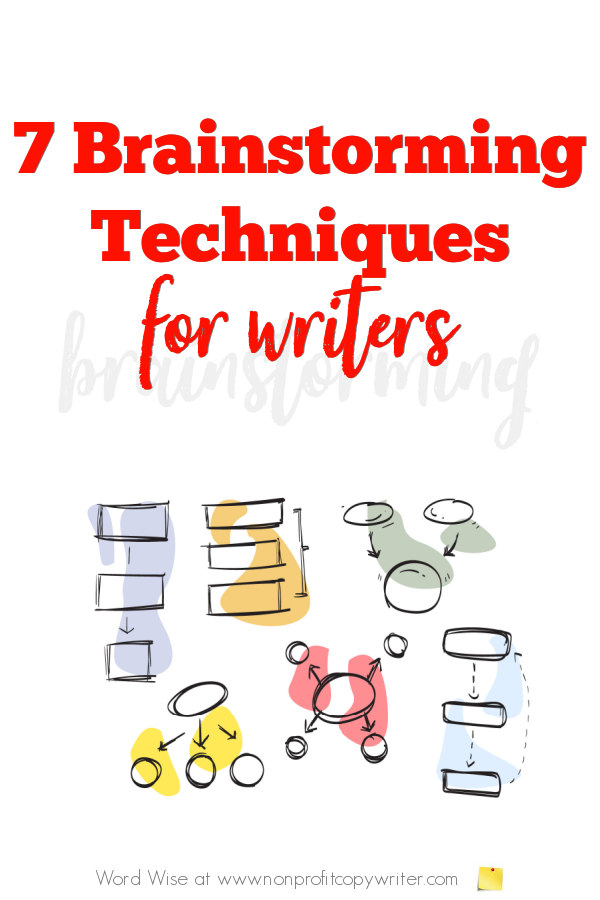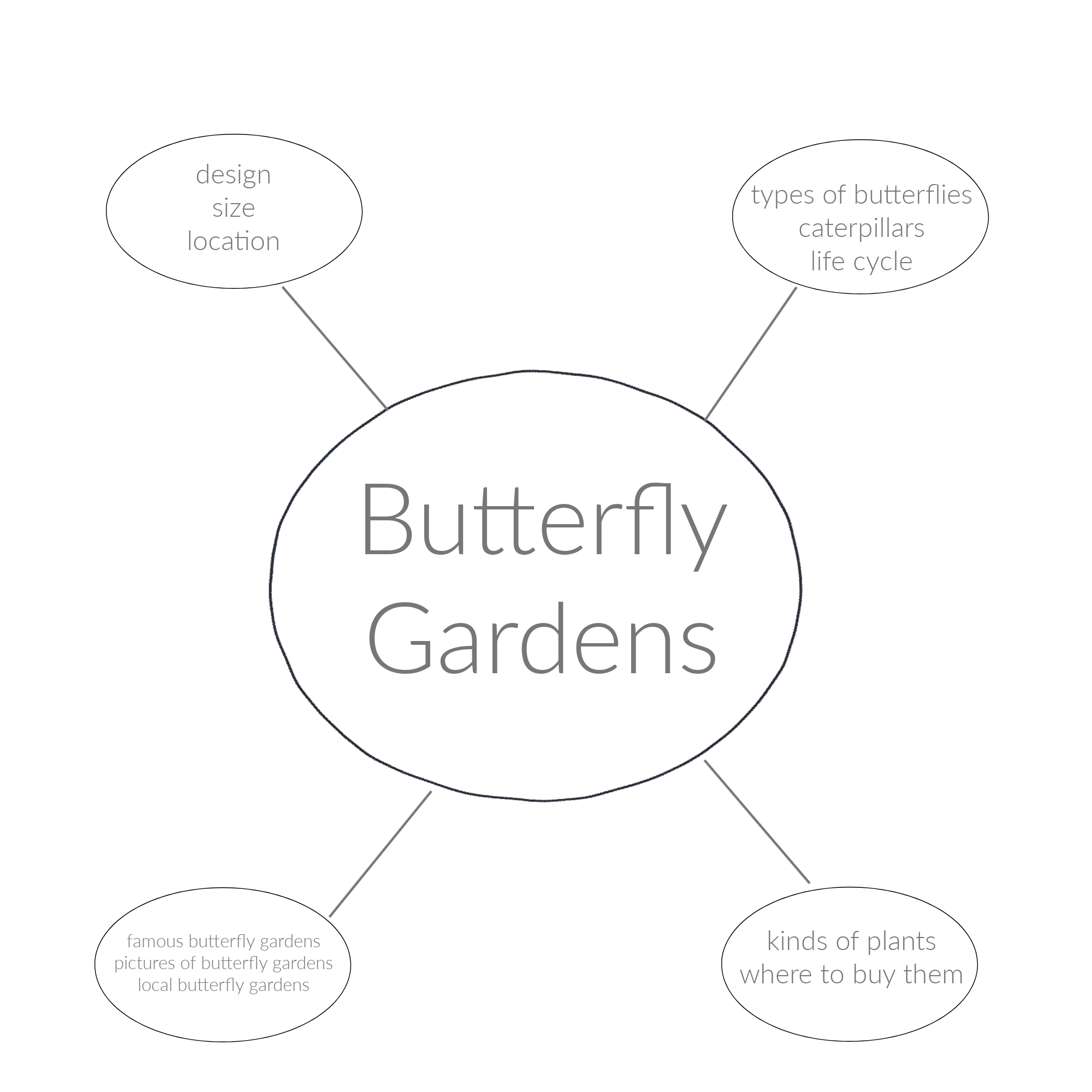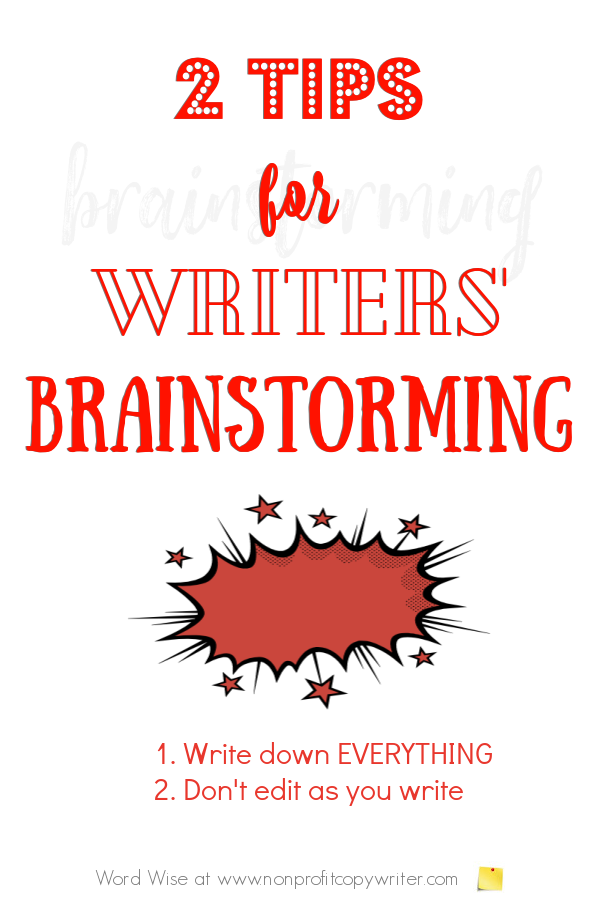Save Time: Get 5 Simple Writing Tips
you can put to use in 10 minutes
7 Brainstorming Techniques for Writers
Award-winning writer Kathy Widenhouse has helped hundreds of nonprofits and writers produce successful content , with 750K+ views for her writing tutorials. She is the author of 9 books. See more of Kathy’s content here.
Updated 5.6.25
Advertising executive Alex F. Osborn was the first to invent formal brainstorming techniques. He became frustrated by his team’s ability to generate creative ideas for their campaigns.
He launched group creativity sessions that allowed team members to suggest spontaneous new ideas without criticism. Participants “used the brain to storm a problem,” and dubbed their gatherings as “brainstorming sessions.”
That was in 1939.
Since then, brainstorming has become a standard part of the creative process both for teams and for individuals. As for writers, we use brainstorming techniques for two key reasons:
- When you have no (or few) ideas. The blank page mocks you and you’re drawing a blank. Or you’re stressed out, wiped out, or worn out and you need inspiration. When you’ve got nothing – or very little – you can use brainstorming techniques to gather a pool of ideas for content and generate a large number of ideas in a short amount of time. Another scenario you may use brainstorming is …
- When you have too many ideas. Brainstorming techniques are helpful when you need to dump the contents in your brain onto the page or screen. Later, you’ll put the chaos into a semblance of order. But at the start, brainstorming helps you “get it out.”
7 Brainstorming Techniques for Writers
1. Lists or bullets
In brainstorming’s simplest version, jot down ideas as they come to you. Use words or short phrases. Then you can review your list and choose one idea to develop. You can expand upon that idea by using yet another brainstorming technique such as free writing, mind mapping, or star bursting.
For instance, let’s say you want to write an article about butterfly gardens. Your brainstorming list might look like this:
- Butterfly garden plants
- Butterfly garden design
- Butterfly garden book
- Butterfly garden plans
- Famous butterfly gardens
- How to build a butterfly garden
2. Free writing
Like lists and bullets, brainstorm with free writing as thoughts come to you, but do so in narrative form. Set a timer (“I’ll write for 15 minutes”) or space limiter (“I’ll write until I’ve got 500 words”). Keep writing even if you don’t feel you’re saying anything of worth. You’ll end up with filler but also some valid points and maybe even a diamond or two in the rough.
3. Mind mapping
A mind map is a diagram that helps you organize information. It’s a particularly useful tool to help you do a “brain dump” of ideas. I used a mind map to create several of my book outlines.
To create a mind map, first write your main topic – your “central concept” – in the center of the paper, whiteboard, or screen. Moving out from the center, creating branches that connect ideas to that central concept and then its subsequent sub-concepts. In other words, cluster together the terms and phrases that seem related. The linked clusters create a “map” or “web” that organizes ideas into groups.
4. Star bursting
This variation on the six standard journalistic questions (Who, What, Where, When, Why, and How) is useful because it’s visual. Start with your main topic in the center of page. Draw a 6-point star.
Fill each point of the star with one of the questions (Who? What? Where? When? Why? How?) Then, answer the questions in relation to your main topic. You may end up with plenty of ideas in one or two points of the star but none about another. The starburst results can give you a clue about what angle to develop (for those star points with substantial content) or what research to pursue (for those star points lacking content). Using our butterfly garden example, your brainstorming star burst might include:
- Who is an expert in butterfly gardens?
- What kinds of flowers are grown in a butterfly garden?
- Where can I see a butterfly garden?
- When are butterfly gardens in full bloom?
- Why are butterflies attracted to certain plants?
- How can I build a butterfly garden?
5. SWOT Analysis
Borrow this well-known strategic planning technique from marketing and project planners to brainstorm your main topic’s Strengths, Weaknesses, Opportunities, and Threats. A SWOT Analysis is the ultimate “pros and cons” list. Start with your main topic at the top of the page. List strengths, weaknesses, opportunities, and threats in a four-part grid or list format. For example:
Strengths of a growing butterfly garden
- Attracts wildlife
- Is beautiful
Weaknesses of growing a butterfly garden
- Takes research to decide what to plant
- Takes expertise to design
- Takes expense to start
- Takes time to maintain
Opportunities in growing a butterfly garden
- Get to spend time outside
- Get to meet other wildlife enthusiasts
- Get to share plants with other gardeners
- Get the opportunity to create a habitat for wildlife
Threats in growing a butterfly garden
- It can attract rodents, pests, varmints
- Requires water in a drought
- Can become a financial and time burden
- Can become an eyesore if not maintained
6. Word Association
This fruitful brainstorming technique can generate substantial numbers of new content ideas. Use these tips:
- Start with one or two words. You can use your main topic if you’ve got one.
- Write down the first word that come to mind.
- Look at your new word and write down the next that comes to mind. Repeat!
- Give yourself a time limit or a word limit.
- Sift back through your results to solidify ideas.
Word banks are a close cousin to word association. These “word collections” are compiled around a particular theme or replace an entry in a thesaurus. A classic word bank is a list of words that can replace the word, “said,” as in spoke, uttered, articulated, declared, answered, replied, exclaimed – and so forth.
Word banks can spark ideas and give you solutions. Your “butterfly garden” brainstorm can yield words like moth, habitats, life stages, caterpillar, monarch, nectar, pollinator – just to start.
7. Cubing
This technique looks at the topic from six different points of view, just as a cube has six sides.
- Describe it: what is it?
- Compare it: what is it like/unlike?
- Associate it: what does it make you think of?
- Analyze it: what parts make it up?
- Apply it: how do you use it?
- Argue it: how are you in favor of it or agree with it? How do you oppose it or disagree with it?
Two Principles to Follow When You’re Brainstorming
Brainstorming can jumpstart any writing project. But we writers are notoriously hard on ourselves, even when conducting a writing exercise. With that in mind, be sure to put two key principles into practice when you’re brainstorming – no matter which brainstorming techniques you use.
First, don’t censure yourself. Write down every idea that comes to mind, no matter how inconsequential or silly or odd it may seem. Do not judge or skip any idea. You can decide later which ones are useful and which are not. But if you judge now, you may miss an imaginative idea or a solid connection.
And don’t edit yourself. Write down the ideas as they come. Don’t worry about grammar, spelling, or even clarity. You can rewrite or edit later. The goal, for now, is to accumulate ideas or get them down on paper.
Start with one idea. Burst it or free write it or list it or cube it. For now, have fun and let the words flow. The work of weeding through and organizing can be saved for later – when you’ve accumulated plenty of fresh ideas.
More Tips about The Writing Process
Planner or Pantser? Make 3 Steps in the Writing Process Work for You ...
Use "The Power of One Principle" to Write More Memorable Content ...
Where to Look for Writing Ideas ...
Capturing Ideas for Writing Projects: a System is the Solution ...
How to Brainstorm Blog Post Ideas for Your Blog or Content ...
How to Find the Main Idea of Your Piece Before You Write ...
Pre-Writing: 4 Easy Steps to Make Your Writing Go Faster ...
The Brainstorm: It’s Time to Gather a Pool of Content Writing Ideas ...
How To Write Faster: Use Bursts AND Binges ...
Tips about the Writing Process on our Pinterest board ...
Return from 7 Brainstorming Techniques for Writers to Nonprofit Copywriter home
As an Amazon Associate I earn from qualifying purchases.
Share This Page

Named to 2022 Writer's Digest list
BEST GENRE/NICHE WRITING WEBSITE


Stop Wasting Time!
Grab your exclusive FREE guide, "5 Simple Writing Tips You Can Put to Use in 10 Minutes or Less"














